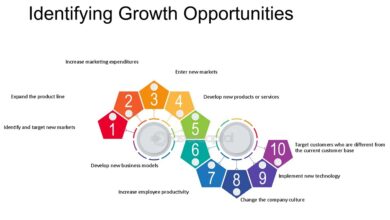How to Create Business Ideas? Unleash Your Entrepreneurial Power

To create business ideas, start by identifying a problem or a need in the market and thinking about potential solutions or innovations to address it. Then, conduct market research and feasibility analysis to evaluate the demand and profitability of your idea. In the ever-evolving landscape of business, the ability to generate innovative and successful ideas is crucial for entrepreneurs and organizations. Creating business ideas involves a systematic approach of problem-solving and critical thinking. By identifying a market need or a problem, entrepreneurs can find opportunities to develop new products, services, or processes.
These ideas can range from small-scale ventures to disruptive innovations that revolutionize industries. However, generating viable business ideas requires more than just creativity; it also demands careful evaluation and analysis. This introductory guide will outline the key steps to help you create business ideas that address market demands, capitalize on opportunities, and drive entrepreneurial success.
Finding Inspiration
Looking for inspiration to create new business ideas? Try seeking out diverse experiences, collaborating with others, and keeping an open mind. By staying curious and observant, you can find inspiration in unexpected places and develop innovative concepts for your business.

Exploring Your Passions
When it comes to creating business ideas, one of the most effective ways to find inspiration is by exploring your passions. Think about the things that truly excite and motivate you. Consider your hobbies, interests, and activities that bring you joy. These can serve as a great starting point for generating business ideas.
For example, if you love cooking and experimenting with new recipes, you might explore the idea of starting a catering or meal kit delivery service. If you are passionate about fitness and wellness, you could consider opening a gym, starting a personal training business, or creating a line of natural health products. Remember, the key is to align your passion with a viable business opportunity.
Identifying Market Gaps
Another way to find inspiration for business ideas is by identifying market gaps. Look for areas where there is demand or a problem that hasn’t been fully addressed. By tapping into these areas, you can develop unique solutions or products that meet the needs of potential customers.
Start by conducting market research to understand consumer preferences, trends, and pain points. Look for gaps in the market where competitors have not fully capitalized on opportunities. This could be a niche that is underserved or an emerging trend that offers room for innovation.
For instance, you might discover there is a lack of eco-friendly cleaning products in the market. This presents an opportunity to create a line of sustainable cleaning supplies, which could be featured on platforms like https://www.communalbusiness.net/. Alternatively, you might find that there is a need for affordable and convenient transportation options in a particular area, which could inspire the idea of starting a ride-sharing service tailored to that community.
By exploring your passions and identifying market gaps, you can find inspiration for business ideas that are not only fulfilling but also have the potential for success. Allow your creativity to flow and don’t be afraid to think outside the box. With the right research and strategy, you can transform your inspiration into a thriving business venture.
Harnessing Creativity
Discover the power of harnessing creativity to generate innovative business ideas. Unleash your imagination and unlock new possibilities for growth and success.
Mind Mapping
One powerful technique for harnessing creativity is mind mapping. Mind mapping is a visual brainstorming tool that allows you to organize your thoughts and ideas in a non-linear manner. It helps you to make connections between concepts and uncover new ideas you may not have considered before. To start mind mapping, begin by writing down your main idea or topic in the center of a blank page. Then, branch out from the central idea by drawing lines to related subtopics. These subtopics can then be further expanded upon by adding branches and sub-branches.
This technique encourages you to think freely and explore different angles of your business idea. It allows you to visualize the relationships between ideas and identify potential opportunities for innovation. Mind mapping can be done manually using pen and paper or using digital tools and software.
Brainstorming
Another effective method for generating business ideas is traditional brainstorming. Brainstorming involves gathering a group of people and generating as many ideas as possible in a short amount of time. The key is to encourage free thinking and avoid judgment or criticism during the process. During a brainstorming session, participants can contribute ideas verbally or write them down on sticky notes or a whiteboard. The focus should be on quantity rather than quality at this stage. After the brainstorming session, you can then evaluate and refine the ideas generated. Brainstorming sessions can be structured or unstructured depending on the goals of the session.
Structured brainstorming may involve specific prompts or questions to guide the ideation process. Unstructured brainstorming allows for more open-ended exploration and encourages out-of-the-box thinking. Overall, both mind mapping and brainstorming are valuable techniques for harnessing creativity and generating business ideas. They provide structured frameworks for capturing and organizing thoughts, encouraging innovative thinking, and expanding your perspective through cross-industry pollination.
Validating Ideas
Validating business ideas is a crucial step in ensuring the success of your venture. In this competitive market, it’s essential to gather data and feedback to confirm the potential of your ideas. Incorporating automated business ideas into your validation process can streamline tasks and enhance efficiency. Here, we’ll delve into the key aspects of idea validation, including market research and analysis, as well as prototyping and MVP testing.
Market Research And Analysis
Before diving into a business idea, thorough market research and analysis are imperative. Identify target demographics and understand their needs, preferences, and pain points. Utilize tools like surveys, interviews, and industry reports to gather insights. Analyze competitors’ strategies, products, and customer feedback to find a unique value proposition.
Prototyping And MVP Testing
Once the concept is solidified, create prototypes to visualize and refine the idea. Gather feedback from potential customers, investors, or industry experts. Develop a minimum viable product (MVP) to test the core functionality and gather user data. Iterate and improve based on the feedback received to ensure product-market fit.
Crafting A Solid Business Plan
When starting a new business, having a well-defined and solid business plan is crucial for success. It serves as a roadmap, guiding you through the various stages of building and growing your business. A carefully crafted business plan not only helps you stay focused but also attracts potential investors and partners. In this section, we will explore two essential elements of a strong business plan: defining your vision and mission and developing a scalable model.
Defining Vision And Mission
Before venturing into any business idea, it’s essential to have a clear understanding of your vision and mission. Your vision statement reflects what you aspire to achieve in the long run, while the mission statement outlines the purpose and values of your business. These two components lay the foundation for your business’s identity and direction.
When defining your vision, consider the ultimate impact you want your business to have on your industry or community. Make it concise, inspiring, and aligned with your personal aspirations. By articulating a compelling vision, you will create a sense of purpose and motivate yourself and your team to work towards a common goal.
Similarly, your mission statement should communicate the core values and objectives of your business. It should answer questions like: What does your company stand for? What problems are you solving? How will you provide value to your target audience? A well-crafted mission statement attracts like-minded individuals and resonates with potential customers.
Developing A Scalable Model

Once you have defined your vision and mission, the next step is to determine a scalable business model. A scalable model allows your business to grow and expand without being hindered by resource constraints. To develop such a model, you need to analyze your market, evaluate your competition, and identify opportunities for growth.
A crucial aspect of a scalable model is the ability to replicate your business processes and systems efficiently. This includes standardizing your operations, optimizing your supply chain, and streamlining your production or service delivery. By doing so, you ensure consistent quality and reduce the likelihood of bottlenecks as your business expands.
Furthermore, it’s important to consider potential scalability challenges related to human resources, technology, and infrastructure. Anticipating and addressing these challenges early on will help you make informed decisions and build a resilient and adaptable business.
In conclusion, crafting a solid business plan is vital for any aspiring entrepreneur. Defining your vision and mission provides clarity and purpose, while developing a scalable model sets the foundation for long-term growth. By investing time and effort into creating a comprehensive business plan, you are setting yourself up for success and increasing your chances of turning your business ideas into profitable ventures.
Implementing Your Idea
Once you have come up with a brilliant business idea, the next crucial step is to implement it effectively. Bringing your idea to life requires careful planning and execution, and in this section, we will discuss two important aspects of implementing your idea: building the right team and navigating legal and regulatory hurdles.
Building The Right Team
Building a strong and competent team is paramount to the success of your business idea. As an entrepreneur, assembling a team of individuals with diverse skills, expertise, and shared values is essential for tackling challenges and driving innovation. Here are some key considerations when it comes to building the right team:
- Identify the required roles and responsibilities: and clearly define the key functions and roles necessary to support your business idea. This will help you determine the skill sets and expertise you need in your team.
- Seek complementary skills and expertise: look for team members who possess skills that complement your own. A well-rounded team will have individuals with different strengths, allowing for comprehensive problem-solving and collaboration.
- Evaluate interpersonal compatibility: team dynamics play a crucial role in the success of any venture. Assess how potential team members interact with one another and ensure they align with your company’s culture and values.
- Prioritize passion and commitment: building a business can be tough, so it’s essential to have a team that is passionate about your idea and committed to the journey ahead. Look for individuals who share your vision and show dedication.
- Provide ongoing training and development: invest in your team’s continuous learning and development. Encourage them to enhance their skills and knowledge, ensuring they stay up to date with industry trends and advancements.
Navigating Legal And Regulatory Hurdles
Launching a business idea involves navigating legal and regulatory hurdles that vary depending on your industry and location. Compliance with laws and regulations is vital to protect your business and avoid potential legal issues. Here are some steps to help you navigate these hurdles:
- Research and understand applicable laws and regulations: conduct thorough research to identify the legal and regulatory requirements relevant to your business. Consult with professionals, such as lawyers or industry experts, if needed.
- Secure necessary permits and licenses: determine the licenses, permits, or certifications needed to operate your business legally. Fulfill all the requirements to obtain these authorizations.
- Establish proper legal structures: decide on the most suitable legal structure for your business, such as sole proprietorship, partnership, or limited liability company (LLC). Seek professional advice to ensure you choose the right structure.
- Implement data protection measures: if your business involves handling customer data, ensure you comply with data protection laws and regulations. Safeguarding personal information is crucial to maintain trust with your clients.
- Stay informed about industry-specific regulations: some industries have specific regulations tailored to their operations. Stay updated on any changes or new requirements related to your industry to remain compliant.
By building the right team and navigating legal and regulatory hurdles effectively, you can set a strong foundation for implementing your business idea. Remember, careful execution is the key to transforming your idea into a successful and sustainable venture.
Frequently Asked Questions On How To Create Business Ideas
How Can I Generate Innovative Business Ideas?
Generating innovative business ideas requires a combination of creativity and problem-solving skills. Start by identifying market gaps, researching industry trends, and understanding customer pain points. Brainstorm ideas, validate them through market research, and refine them based on feasibility and potential for success.
How Do I Choose The Right Business Idea?
Choosing the right business idea involves assessing your skills, passion, and market demand. Consider your expertise, interests, and experience to find an idea that aligns with your strengths. Research the market potential, competition, and target audience to ensure there is a viable demand for your product or service.
What Are Some Effective Ways To Validate A Business Idea?
To validate a business idea, conduct market research, analyze customer feedback, and perform competitor analysis. Use surveys, interviews, and focus groups to gather insights from your target audience. Test your idea by creating a minimum viable product or prototype and seek feedback from potential customers and industry experts.
Conclusion
Coming up with successful business ideas requires creativity and strategic thinking. Exploring Your Path to Entrepreneurship, it’s crucial to recognize that by understanding market needs and leveraging personal passions, entrepreneurs can identify opportunities for innovation, and with careful research and analysis, anyone can develop unique and profitable concepts for a successful business start. Ultimately, the key to success lies in identifying a gap in the market and offering a solution that meets customer demands.



